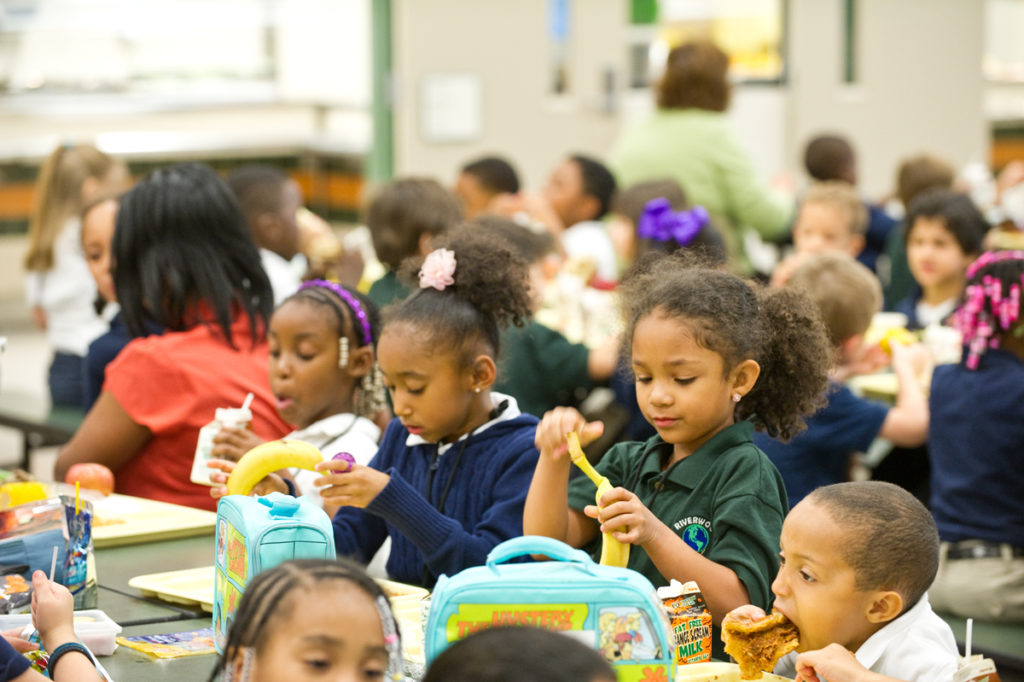

That changed after school leaders prioritized improving lunchtime behavior during the 2006/2007 school year. Their approach: involving children in a rule-making process that clarified behavior expectations and increased student investment in the rules.
When the school year began, Garfield’s core Responsive Classroom team—eight teachers and administrators who guide the school’s implementation of the approach—resisted diving immediately into lunchtime issues. “We were eager to begin,” says Principal Maureen Marshall, “but we knew we’d be more successful long-term if we got classroom behavior in shape first.”
During the first few months, therefore, the school focused on discipline in the classrooms. In each room, children and teachers generated rules that would help all class members realize their hopes and goals for the year ahead. Teachers actively taught students how to translate their rules into action. They used positive comments to reinforce appropriate behavior and logical consequences to help children learn from their mistakes. “Time out” areas gave students a place to calm themselves when their behavior was beginning to go off track. (To learn about this approach to classroom rule-making, see our book, Rules in School.)
Intensive focus on lunch behavior began in December. First Sadaf Khan, the lunch supervisor, and guidance counselor Janet Dougherty visited each class and asked the children, “What would you like lunchtime to look, sound, and feel like?” The children had lots of ideas. Many wanted a less rowdy lunchtime. They voiced concerns about bullying, disruptive behavior, and rules that seemed inconsistently enforced.
Janet and Sadaf listened carefully and wrote each class’s ideas on large sheets of paper. “We learned a lot,” says Janet, noting that an additional benefit of the visits was that students saw Sadaf in a new light—as a teacher. Maureen added that Sadaf also got to know students better and to see classroom discipline practices in action.
Janet and Sadaf took the students’ ideas to the Student Cooperative Association (SCA), an elected group of twenty fourth, fifth, and sixth graders. Using a method similar to their classroom rule-making process, these students organized the ideas into themes. Most ideas fit one of three themes: Respect Yourself, Respect Others, Respect the Environment. These became the new Garfield lunch rules.
Next, the core team devised lunchroom procedures that would foster the atmosphere of respect embodied in the new rules. Some procedures guided students in how to move around the cafeteria, eat, and clean up. Other procedures told what would happen if students broke the rules. For instance, as in a classroom, a misbehaving student would be reminded of the rules, but only once. If she continued misbehaving, she’d be directed to take her lunch to one of several “time-out” desks around the cafeteria perimeter.
The core team then taught the new procedures to SCA members and had them role play situations when they’d be expected to make responsible decisions independently—for example, deciding what to do when they’d finished eating but others at their table had not. At an all-school assembly, the SCA modeled the procedures and presented the role plays to the rest of the students. “Having student leaders demonstrate was very powerful,” says Maureen. “The SCA members are popular kids, and their example carried a lot of weight with their classmates.”
Finally, each class visited the cafeteria to practice the procedures and do some role plays for themselves. Every child had hands-on experience with placing trash carefully in the bin, using an inside voice, responding to the “lights off” signal for silence, and cooperating with tablemates. After their practice visit, students were expected to follow the lunch rules and procedures.
After formal “lunch training” ended in mid-February, staff saw significant improvement in the atmosphere of the Garfield lunchroom. “It isn’t perfect, but it is much better,” says Maureen, noting that she’s now getting fewer lunchtime disciplinary referrals.
Lunchtime rules and procedures are becoming part of Garfield’s school culture. School newsletter articles have shared the rule-making process and new procedures with families. Table tents summarizing the rules adorn each cafeteria table. And from now on lunchtime behavior will be reviewed early each fall. Since most students will already be familiar with the rules and procedures, Maureen predicts that the Garfield community “should be able to get lunch off to a good start from the very beginning of every school year.”
Setting: Large suburban district
Grades: K to 6
Number of students: 350
% of students receiving free or reduced-price lunch: 48%
Number of home languages among student body: 37
Number of classrooms: 17